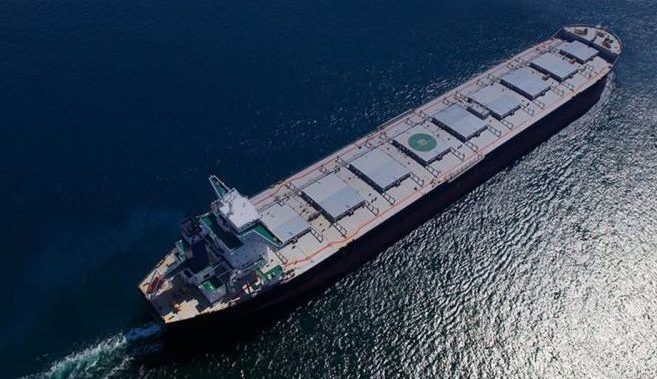Cape decisions

Panos Patsadas, chartering and operations manager at DS Multibulk, takes a big picture look at the capesize trades in the wake of Louis Dreyfus’s decision to quit the cape spot market.
Louis Dreyfus Armateurs’ decision to exit shipowning on the spot cape market should not come as much of a surprise. The reasoning behind the decision however is what raises the better questions. Is the spot cape market really dominated by the mining giants? If that is the case, then why did Vale’s significantly more aggressive move towards shipowning fail? Why do Greeks keep stacking up secondhand cape bargains? Part of the answer lies in the business model.
Louis Dreyfus’s core business has always been commodity trading. Over the decades, assuming more control of the supply chain became a natural evolution for Louis Dreyfus, and investment in ports and terminals made all the sense in the world. More efficiency, less risk, better margins. It is that simple. So where does shipowning come into this model? What is the objective? Dry bulk is a cape driven market, and in this respect, yes, high volatility is a good enough reason for wanting out. Louis Dreyfus most likely opted for owning capes to partly cater for their in-house needs and partly to serve the competitive market. But if a cape would cost less than $5,000 a day a couple of years ago, why purchase a leveraged cape, and pay $7,000-$8,000 a day? Why not even bareboat one and it could even cost you less than $5,000 a day?
Louis Dreyfus’s decision to exit the owning of capes can only mean one of two things: Either the money earned on serving own cape stems was consistently less than the money lost while the vessels were traded in the spot market, or the future expectation of demand for commodities would continue to be volatile, thus affecting the average earnings of those vessels. In other words, the group probably does not see consistent earnings for capes in the next couple of years to come, and thus is not willing to take the asset risk in anticipation of a booming spot market. After all, the last cycle has put the dry bulk market in unchartered territory, making Louis Dreyfus’s decision a conservative yet reasonable one.
So, if the business model is to try and earn money trading a cape in the spot market, yes then the mining giants do dominate both price and terms, and yes, the risk of owning a vessel can be too high. If the business model however is to profit from asset play, and there is sufficient cash in the bank to see it through, then what happens between time of purchase and time of sale is almost irrelevant.
Finally, the owners and the mining giants are not the only players in this game. The demand side has a far stronger influence on owners than mining giants do, and China’s demand for commodities remains the driving force behind the cape market. Look no further than Vale’s arm-wrestle with China, and it becomes instantly clear who has the bigger influence on market and volatility. My personal view is that the mining giants do reflect the changes in demand through their activity (or lack of), but they do not control the owners’ market, at least not in the context Louis Dreyfus claim they do. Of course, if you ask the guys at the trading houses, I am sure they will have a different opinion and that’s ok. That’s the beauty of shipping!

Excellent article. L-D are very serious people; they have been in Capes “for ever and a day”, and it may be that, taking a longish view of trading, rather than asset playing, Capes, the moves made by the miners to influence tonnage positions, rather than big moves in rates, make the business marginally less attractive by paring a few cents off the margin every time.